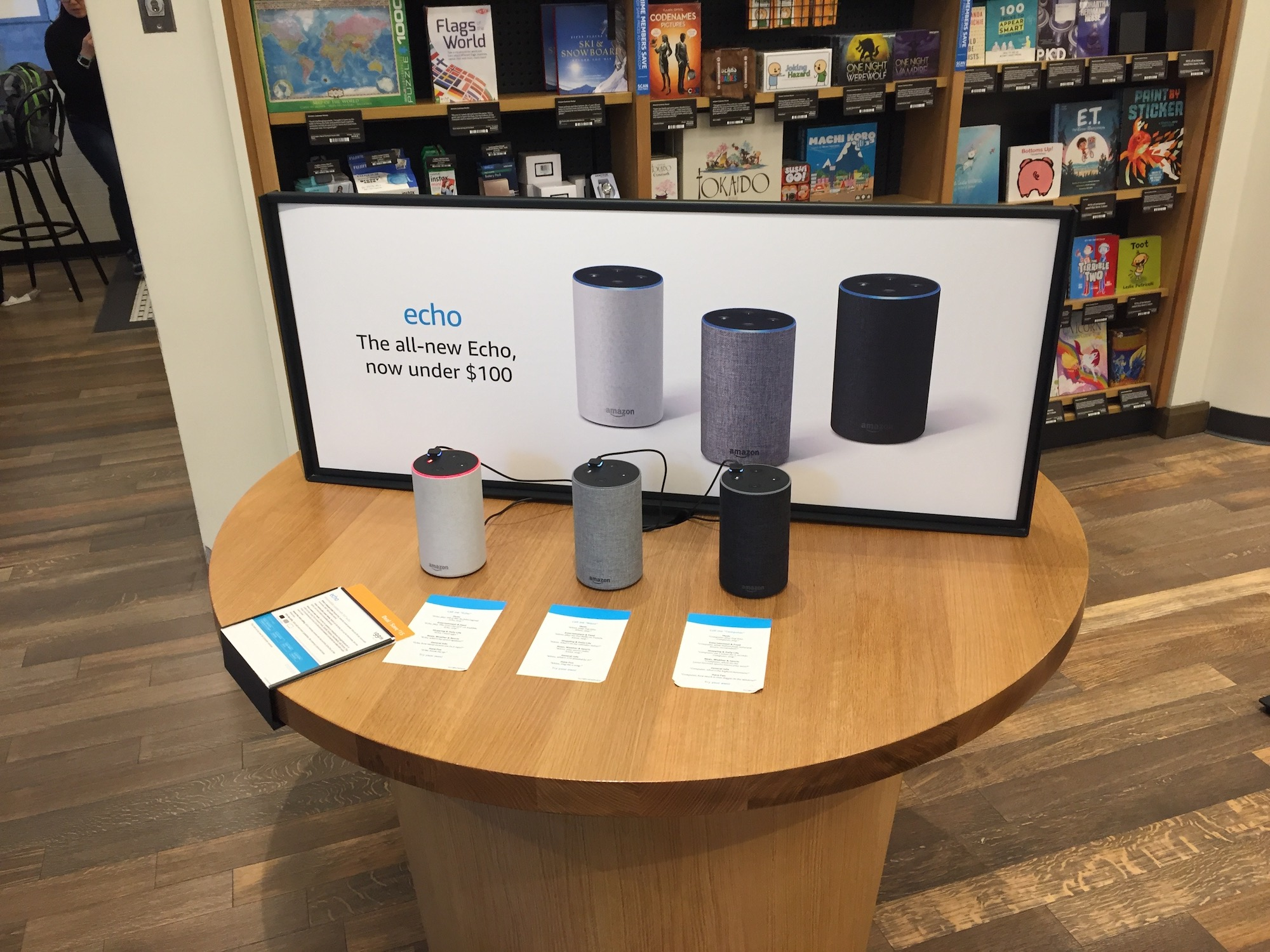- Amazon is growing at an incredible rate, while Barnes & Noble has been struggling for years.
- While Barnes & Noble’s stores are more inviting than Amazon Books’, the latter’s minimalist philosophy is probably closer to the future of chain retail.
- That model isn’t ideal for bookstores, which are best when they can offer specialized curation and enough inventory to encourage random discoveries.
It’s hard to think of two businesses with more different trajectories than Amazon and Barnes & Noble. The former is one of the most valuable companies in the world, while the latter has struggled for years.
It’s also strange to imagine the two as direct competitors. Before opening its first Amazon Books store in 2015, Amazon didn’t have a physical retail footprint. Now, it has over a dozen bookstores that represent yet another obstacle to Barnes & Noble’s attempts to turn around its fortunes.
I visited one of each brand’s stores in New York City and discovered a depressing truth about the future of retail.
Here’s what I saw:
I started at Amazon Books on 34th Street in Midtown Manhattan. It's the larger of Amazon's two bookstores in NYC, covering a total of 5,200 square feet.

It resembles a cross between an Apple store and a traditional, local bookstore.

The store's shelves and displays are more compact than a traditional bookstore's, and the space is easier to navigate. But, like other bookstores, it displays far more inventory than many modern retail spaces.
The store is hyper-organized, but that isn't always a good thing.
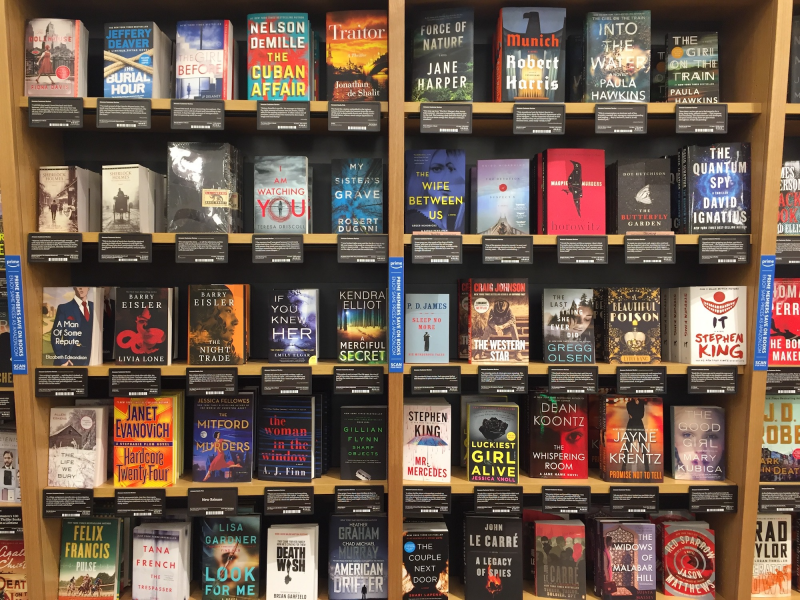
Amazon wants to make the book-shopping process more efficient, but in doing so, it overwhelms shoppers with visual information. The cards beneath each book make the store look like a warehouse, and there's a reason most bookstores don't display every book with its cover facing shoppers: The variety of designs and color schemes makes it difficult to decide where to look.
It seems like inventory is largely determined by recommendations from Amazon and its customers.

Every book on display has a small card beneath it that includes its rating from Amazon customers and an excerpt from a customer review.
The selection is a mixed bag.
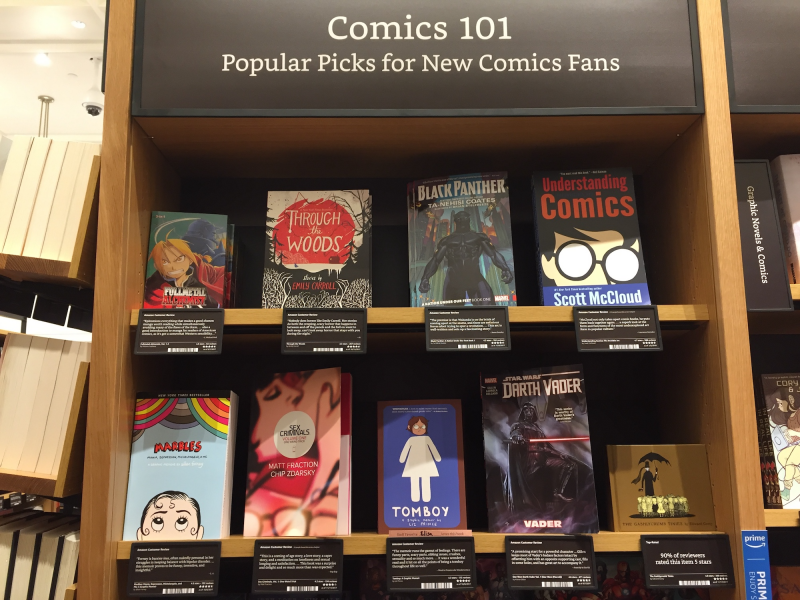
The store's inventory strategy emphasizes obvious selections - best-sellers, award-winners, critically-acclaimed authors - which is good and bad. On one hand, it can be helpful for readers who are looking for entry points into certain genres or who want to brush up on the classics. This comic and graphic novel display, for example, makes things simple for a newcomer.
But the strategy doesn't differentiate a physical retail store from an online one. Since many of the sorting mechanisms the store uses can be replicated on Amazon's website or with Google searches, it's difficult to understand why someone should make the effort to go to Amazon Books instead of shopping online.
It doesn't help that it's more difficult to find a book's price in the store than online.
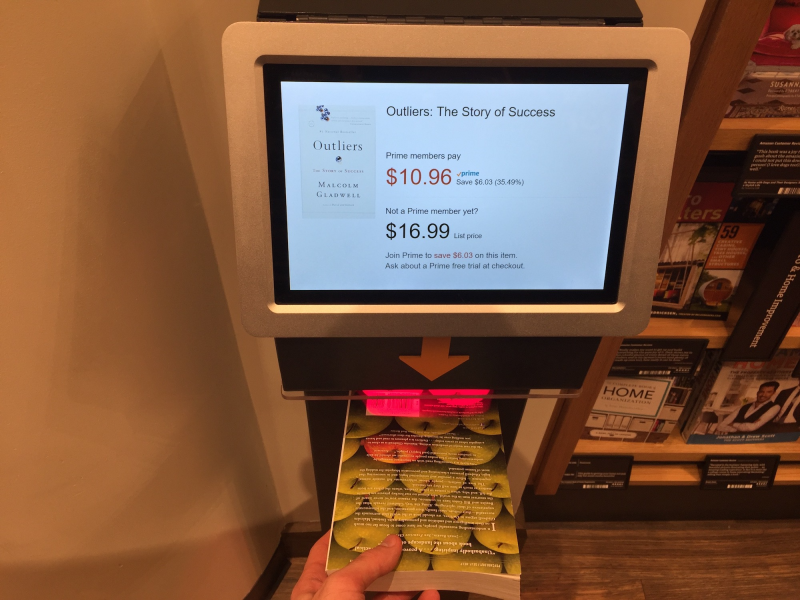
To find out a book's price, you have to scan it with either the handful of machines available in the store, or on Amazon's app. Prime members get significant discounts.
But the store might not be focused on selling books at all. In the middle of the store are interactive displays for tech products like the Echo ...
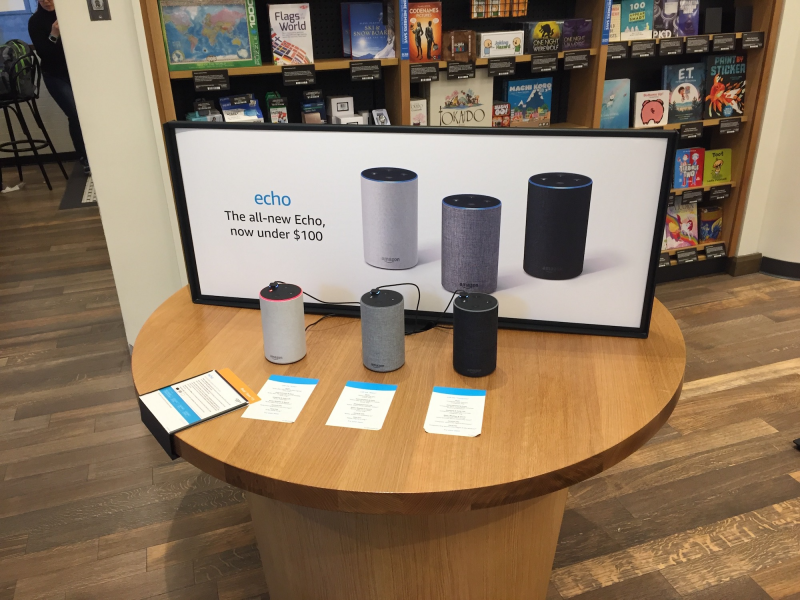
... and the Kindle.

Selling an e-reader in a physical bookstore is an obvious conflict of interest. But when you combine that fact with the availability of other tech devices and discounts for Prime members, it appears books may just be window-dressing for Amazon's larger goal: to encourage you to buy into a network of hardware and services that are designed to maximize the amount of shopping you do with Amazon.
The store resembles a physical version of Amazon's online store.
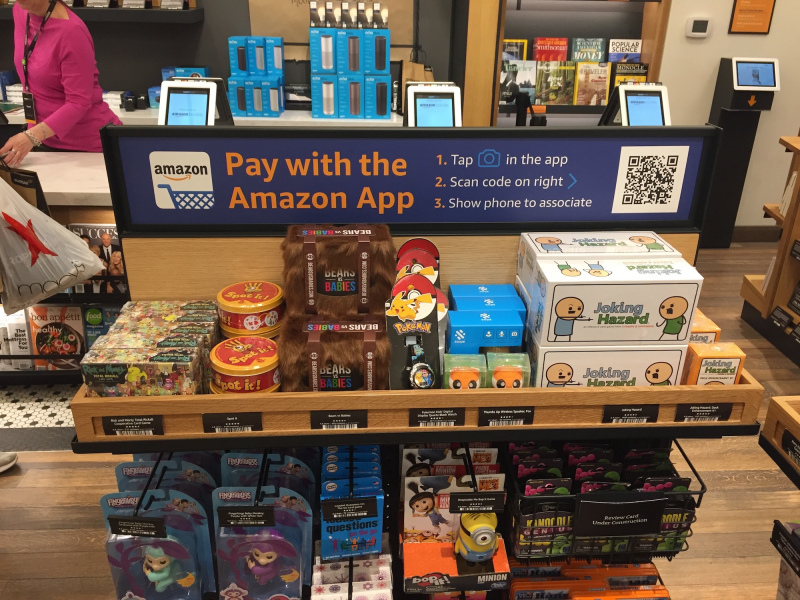
Amazon's website does an excellent job of making it easy to research and sort through an enormous number of products without feeling overwhelmed. While Amazon Books couldn't possibly match the web store's variety, its organizational principles reminded me of the experience of shopping online.
But that may not be the best model for a bookstore. In an era where it's never been easier to buy a book without leaving your home, bookstores need to offer an experience that's different than shopping online. The best, like NYC's Strand, do so by having a knowledgeable staff curate displays with personal recommendations and designing their stores to encourage random discoveries.
Amazon Books feels like it was created by an algorithm, right down to the coffee shop that sits next to the main retail space. It's so spare and minimal that it's a better environment for taking Instagram photos than reading or chatting with a friend.
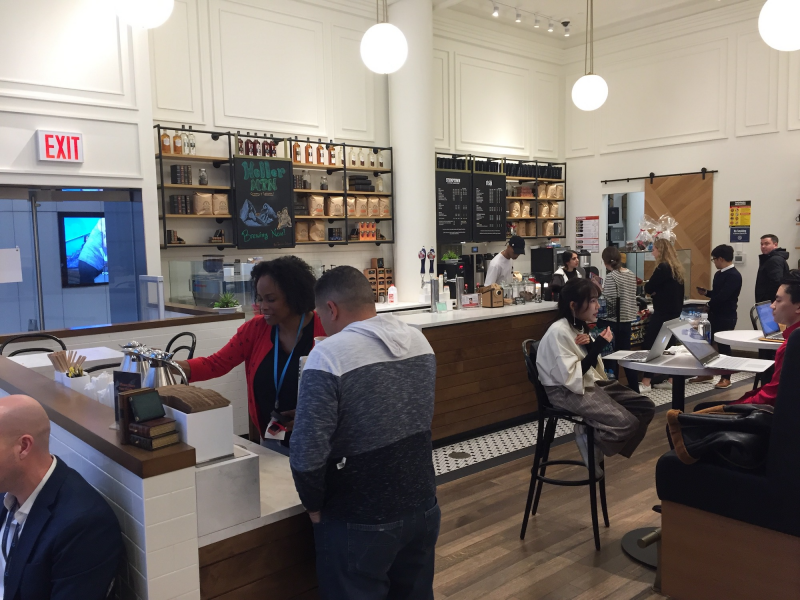
I went to Barnes & Noble's 5th Avenue location next.

The first floor illustrated both the store's strengths and weaknesses.
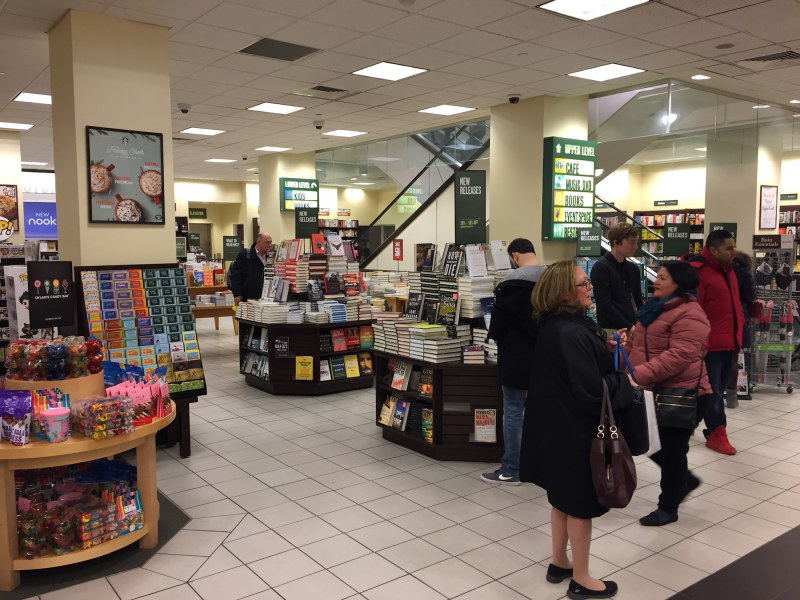
It knows how to display books, but it sells far too many unrelated products.

Barnes & Noble has been struggling for years, so it's easy to understand why it would offer impulse buys like candy and discounted pop culture memorabilia to boost sales, but they make the first floor feel cluttered.
The checkout line looks like a dollar store.
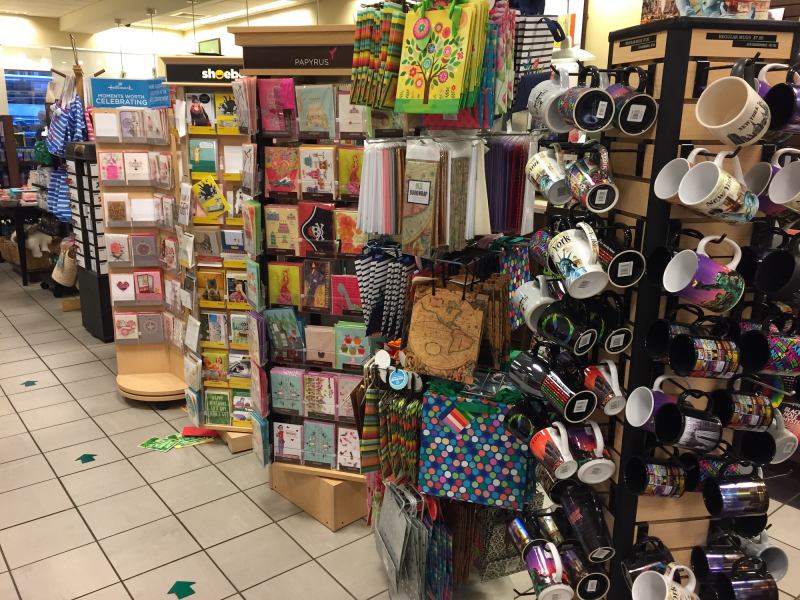
The grab-bag inventory strategy makes the store seem confused and desperate.

The store uses a lot of space to display products with limited appeal, like coin-collecting books and hardcover journals.
The store would be better served in a smaller location.
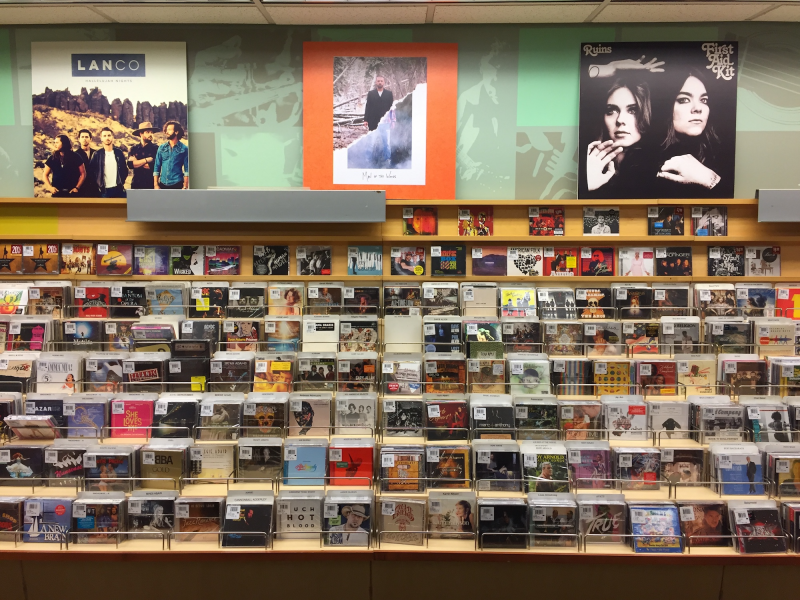
This is just a fraction of the CDs that were on sale in the store's film and music section. Given how CD sales have plummeted over the past decade, I can't imagine the demand would even come close to the store's supply.
But Barnes & Noble is still very good at one thing: selling books.

Unsurprisingly, Barnes & Noble resembles a traditional bookstore far more than Amazon Books does. And that's a good thing, because unlike Amazon Books, I could see myself spending hours shopping at Barnes & Noble due to the variety of books available and the long, maze-like shelves that encourage random discoveries. As a result, I'd also be more likely to purchase multiple books from Barnes & Noble than at Amazon Books.
Barnes & Noble's display strategy is more traditional and effective.
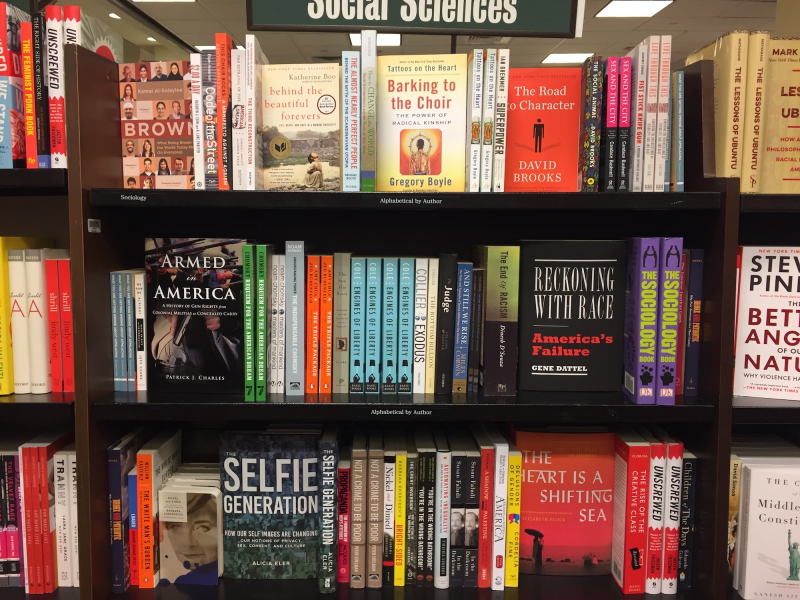
This display is a perfect example of how to catch and direct a shopper's attention. By alternating books with their covers and spines facing the shopper, the display emphasizes a handful of books without overwhelming the shopper.
Overall, it's a more inviting environment than Amazon Books.
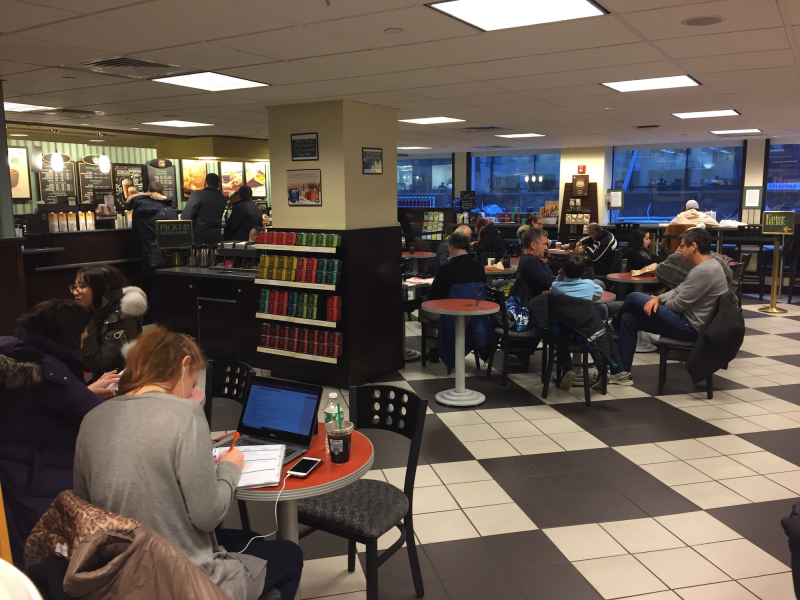
Even the coffee shop, which is run by Starbucks, feels more inviting than the one at Amazon Books.
Despite its flaws, I'd rather shop in a Barnes & Noble. But Amazon Books more likely resembles the future of chain retail.

That's a shame as far as bookstores are concerned. Barnes & Noble provides a compelling, if imperfect, alternative to local bookstores in cities that can't sustain them. But its retail strategy more closely resembles those of struggling department stores - selling too many things in too big a space - than more innovative counterparts like Apple and Warby Parker.
A minimalist approach might be best for tech products, but it doesn't work as well for bookstores. The more you limit inventory, the more you defeat the purpose of going to a bookstore in the first place. Barnes & Noble is a better store than Amazon Books, but it's tied to a worse business model.

